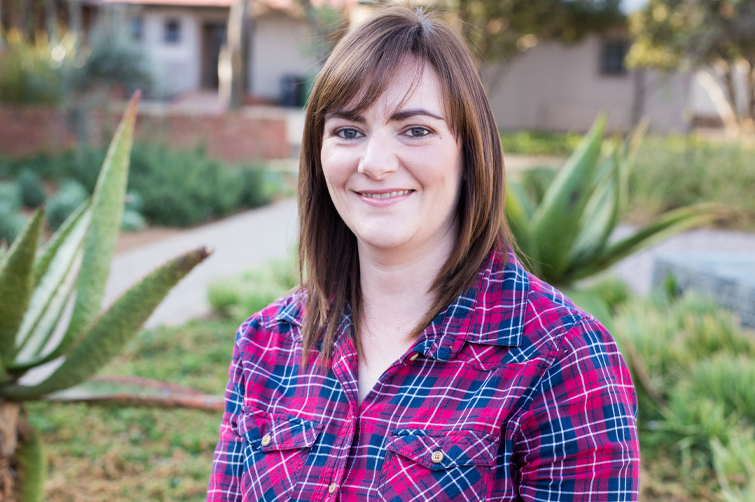Latest News Archive
Please select Category, Year, and then Month to display items
31 December 2019
|
Story Dr Cindé Greyling
|
Photo Anja Aucamp
 Dr Mariana Erasmus, SAENSE Platform Manager, says water remediation is vital for both the ecosystem and industries.
Dr Mariana Erasmus, SAENSE Platform Manager, says water remediation is vital for both the ecosystem and industries.
KovsieInnovation at the UFS supports innovative research outputs in various ways – one of which is to protect the intellectual property and to register patents where viable. This is in line with KovsieInnovation’s broader aim to create third-stream income for the university. Patent registration is a complex process and the UFS is proud to have the needed expertise to properly facilitate such an endeavour.
The SAENSE Platform
South Africa is a water-scarce country, with many water hungry industries (such as agriculture and mining). “Industrial processes often contaminate water with heavy metals, harmful chemicals, radioactive waste, and even organic sludge,” Dr Mariana Erasmus, SAENSE Platform Manager, explains.
Hence, water remediation is vital for both the ecosystem and industries. One of the key functions of the SAENSE Platform is to offer water-remedial solutions for the (bio)remediation of nitrates, heavy metals, and salts, among others. The platform’s activities and services are supported by undergraduate and postgraduate students and researchers, using Technology Innovation Agency (TIA) funding. TIA is a national public entity that serves as key institutional intervention to bridge the innovation chasm between research and development.
From waste to water
Through the joint effort of two mining companies and the UFS/TIA SAENSE Research Platform, a new treatment for mine drainage (MD) has been developed. This patented B-DAS (Barium – Dispersed Alkaline Substrate) technology effectively treats the major contaminants found in acid, alkaline, or neutral mining wastewater. The aim of the B-DAS system is to provide a passive water-treatment solution with minimum waste production; it can also be a potential pre-treatment for reverse osmosis (RO) to lower the requirements of the membranes and therefore potentially reduce the RO cost.
The success of the patent is that it turns unusable water into water that is fit for agricultural purposes at a reduced cost and increased efficiency.
Haemophilia home infusion workshop
2017-12-17

Parents receive training for homecare of their children with haemophilia.
Photo Supplied
Caregivers for haemophilia patients, and patients themselves from around the Free State and Northern Cape attended a home infusion workshop held by the Clinical Skills unit in the Faculty of Health Sciences in July 2017. “It felt liberating and I feel confident to give the factor to my son correctly,” said Amanda Chaba-Okeke, the mother of a young patient, at the workshop. Her son, also at the workshop, agreed. “It felt lovely and good to learn how to administer factor VIII.”
Clinical skills to empower parents and communities
There were two concurrent sessions: one attended by doctors from the Haemophilia Treatment Centre, and the other attended by community members including factor VIII and XI recipients, caregivers and parents. The doctors’ meeting was shown informative videos and demonstrations on how to administer the newly devised factor VII and XI kit, and discussed the pressing need for trained nurses at local clinics. Dr Jaco Joubert, a haematologist, made an educational presentation to the community members.
The South African Haemophilia Foundation was represented by Mahlomola Sewolane, who gave a brief talk about the role of the organisation in relation to the condition. Meanwhile, procedural training in the simulation laboratory involved doctors and nurses helping participants to learn the procedures by using mannequins and even some volunteers from among the patients.
A medical condition causing serious complications
Haemophilia is a medical condition in which the ability of the blood to clot is severely impaired, even from a slight injury. The condition is typically caused by a hereditary lack of a coagulation factor, most often factor VIII. Usually patients must go through replacement therapy in which concentrates of clotting factor VIII (for haemophilia A) or clotting factor IX (for haemophilia B) are slowly dripped or injected into the vein, to help replace the clotting factor that is missing or low. Patients have to receive this treatment in hospital.